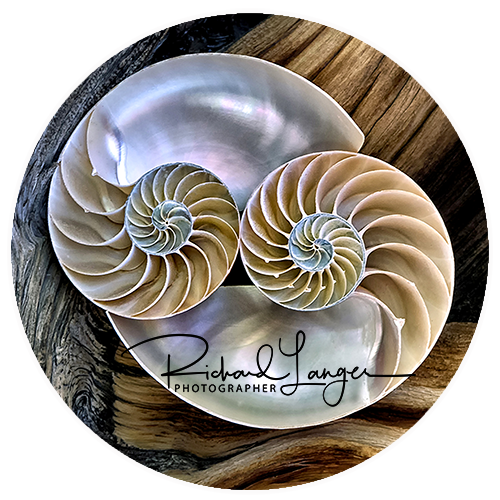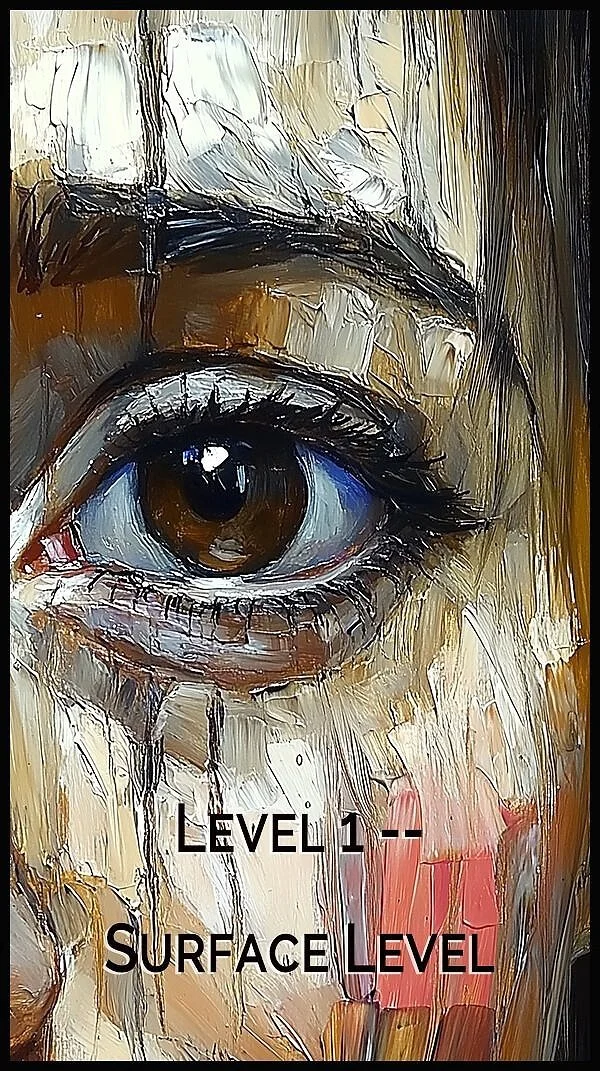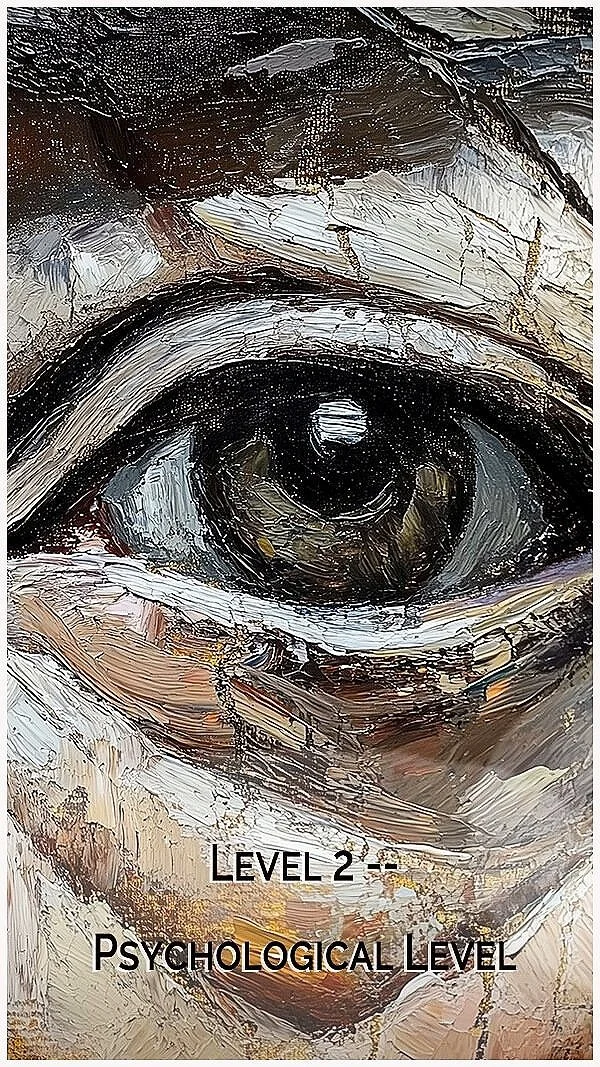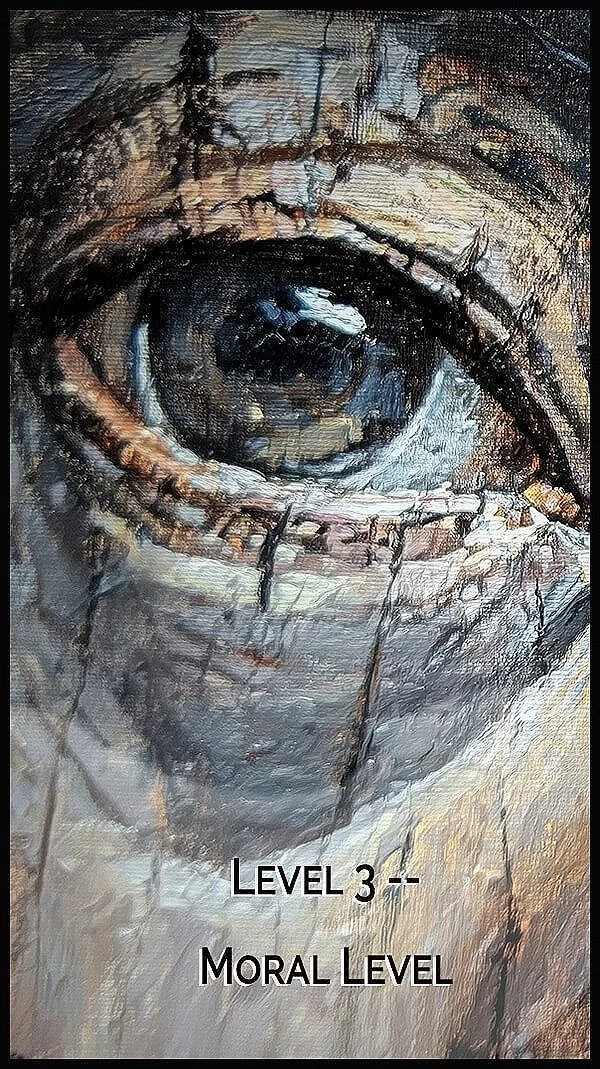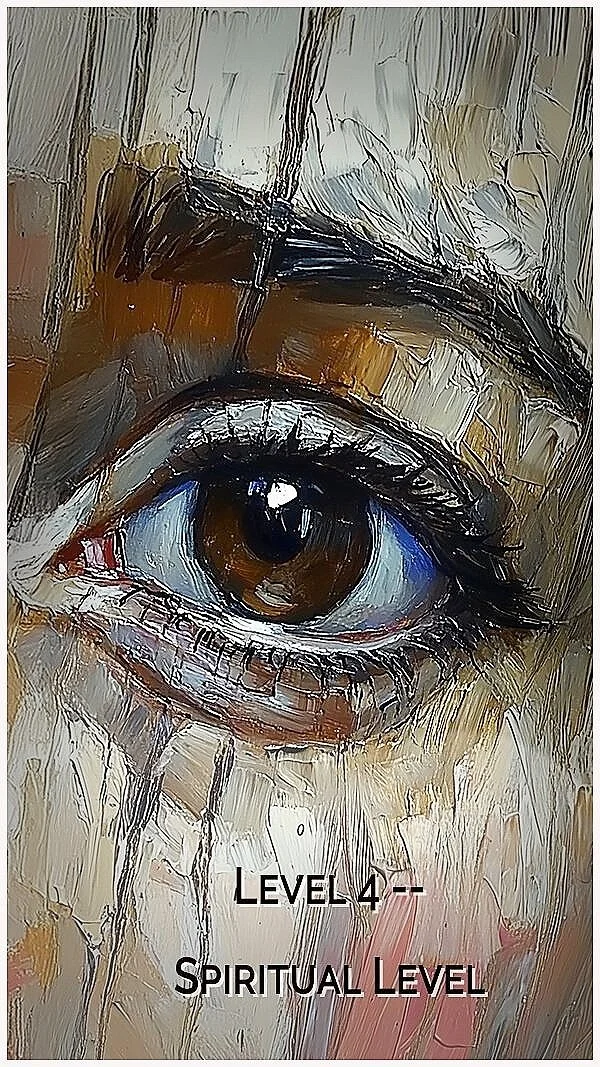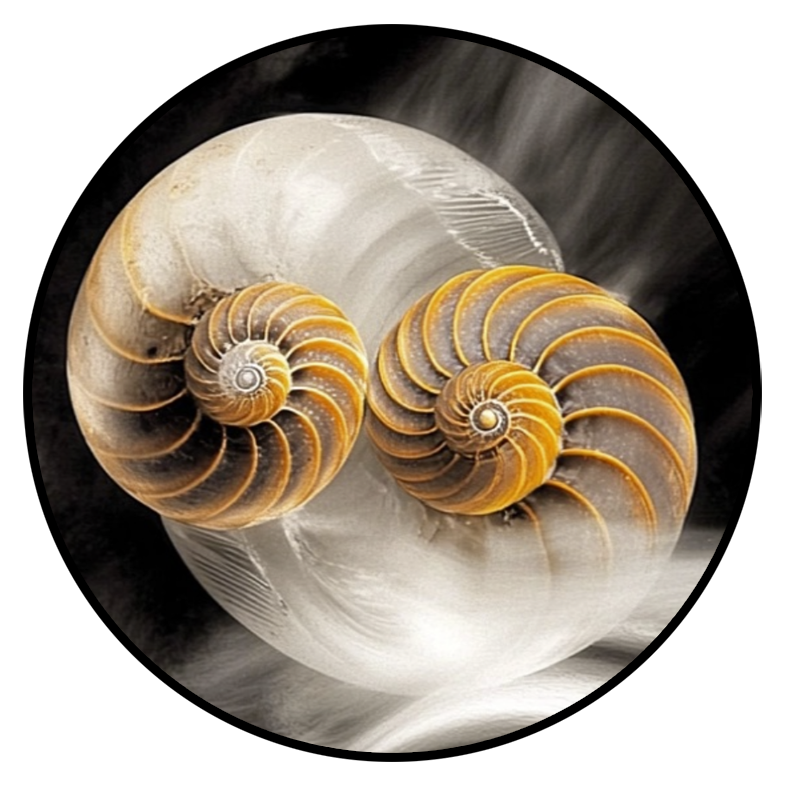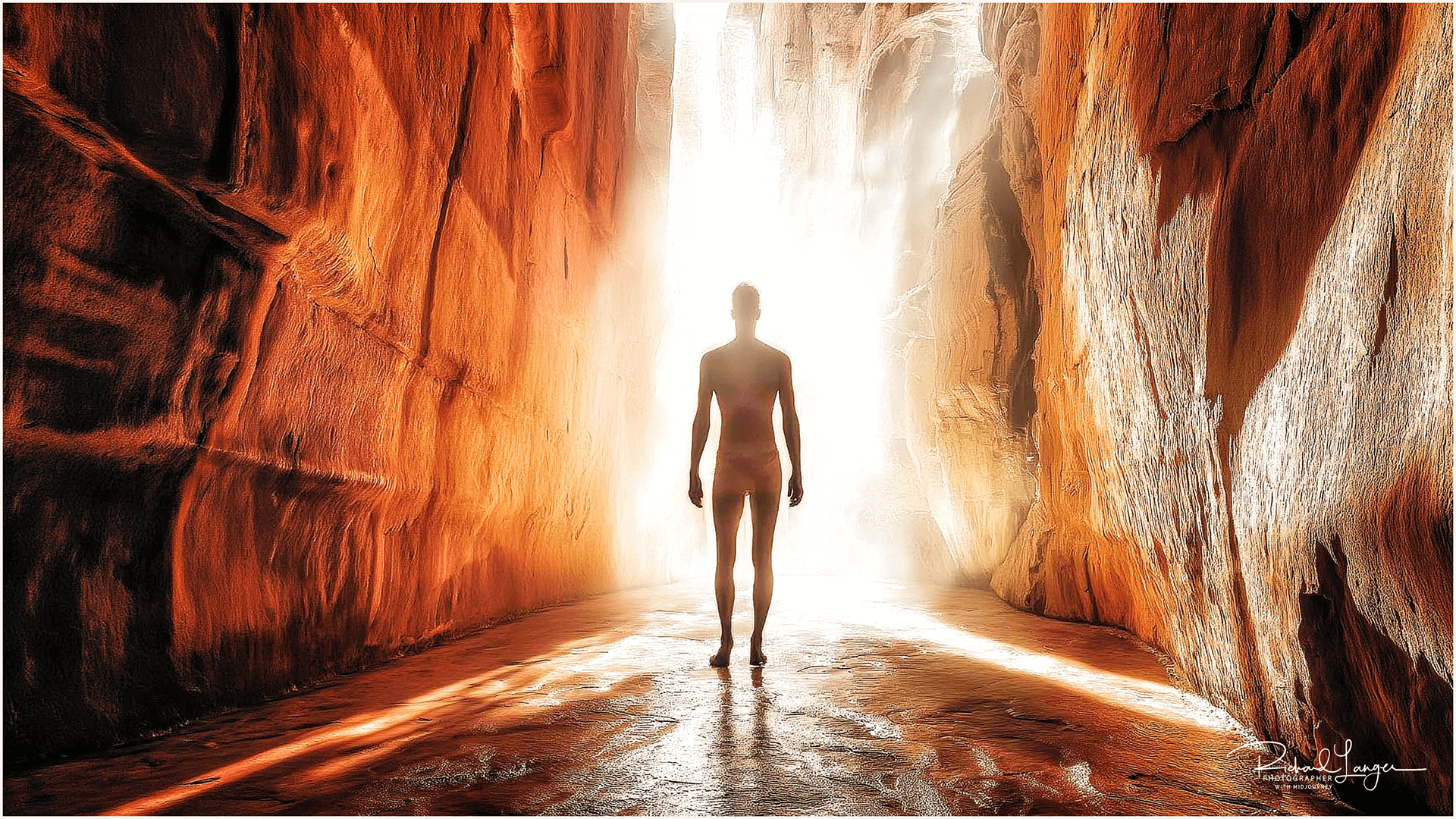
Know-Your-Self
A Deeper Exploration

Integrating The Levels of Self-Knowledge With The Tools of Photography
Self-knowledge unfolds across four levels: Surface, Psychological, Moral, and Spiritual. Each level offers a distinct way of understanding who we are, and each corresponds with a unique tool that photography provides.
In many ways, these levels are interdependent; one naturally leads to the next as we peel back the layers of our identity.
This process is like a spiraling journey where each layer interacts with and integrates with the others as it spirals deeper in. For instance, as we explore our psychological self, it often reshapes how we see ourselves morally or spiritually.
By examining each of these levels with the tools of photography, we cultivate a holistic self-knowledge that leads to greater authenticity, wisdom, and connection with all life.
Examples of photography at each of the four levels of ‘self’ are presented in 10 Galleries here.

Level 1: Surface ‘Self’ —
The Identity We Present to the World
“Awe enables us to see in the world something beyond ourselves, something that can lift us out of ourselves.”
-Abraham Joshua Heschel, Jewish Rabbi and Philosopher
The Surface Level of self-knowledge is the most outward-facing and easily observable. It consists of our social roles, habits, preferences, and self-image—the ways in which we define ourselves in relation to the world. This level includes everything from how we dress and speak to the personality traits we emphasize in different situations.
At this level, we may ask:
· Who am I in my everyday life?
· What roles do I play—parent, friend, professional?
· How do I wish to be seen by others?
· How do I experience myself?
Much of the surface-level self is shaped by societal expectations and conditioning. It is the "mask" we wear—not in a deceptive sense, but in the way we interact with the external world. While it is a necessary part of life, self-knowledge at this level is incomplete if it does not go deeper.
Photography as a Tool: Experiencing Awe
Photography helps break through the surface-level self by opening us up to AWE—a profound experience of wonder that temporarily dissolves the ego. When we witness and capture something breathtaking—a vast landscape, the intricate details of a flower, the night sky—we move beyond personal concerns and experience a sense of something greater.
Awe interrupts habitual thinking and allows us to glimpse a reality beyond our immediate self-image. In this way, photography at the surface level shifts focus from "me" to the world, inviting us into the larger perspective that awaits.

Level 2: Psychological ‘Self’ —
Integrating Our Shadow
“Knowing your own darkness is the best method for dealing with the darkness of other people.”
-Dr. Carl Jung
The Psychological Level of self-knowledge moves beyond the external self to explore our inner world—our emotions, subconscious patterns, and hidden aspects of personality. This includes confronting the shadow self, a term Dr. Carl Jung used to describe the parts of ourselves we suppress or deny.
At this level, we may ask:
· What emotions drive my actions?
· What fears or insecurities do I hide from myself?
· What aspects of myself do I reject or struggle to accept?
Self-knowledge at this level requires honest and humble introspection. It means acknowledging both our strengths and weaknesses, our desires and fears. Only by bringing awareness to these hidden aspects can we integrate them into a more whole, authentic self.
Photography as a Tool: Integrating Our Shadow
Photography becomes a mirror to our subconscious at this level. By engaging with themes of contrast, light and shadow, and raw human emotion, photography allows us to externalize our inner world.
· Capturing uncomfortable or complex emotions in images (e.g., loneliness, vulnerability) helps us process and integrate them.
· Using black-and-white photography can symbolize the interplay of conscious and unconscious forces within us.
· Photographing what we usually avoid or fear (e.g., aging, cruelty, decay) allows us to confront what we suppress.
By engaging in this type of photography, we gain a deeper understanding of ourselves—not just the polished version we present to the world, but the full spectrum of who we really are.

Level 3: Moral ‘Self’ -
Embracing Our Connectedness
“Each of us is a vital thread in another person’s tapestry; our lives are woven together for a reason.”
--Maya Angelou, American Poet
The Moral Level of self-knowledge is where we recognize that we are not isolated individuals but deeply interconnected with others and the world. At this level, self-awareness expands to include values, ethical responsibility, and our impact on others.
At this level, we may ask:
· What principles guide my life?
· How do my choices affect others?
· What is my responsibility to the world and other people in it?
Moral self-knowledge is about more than just personal identity—it’s about recognizing that who we are is inseparable from the relationships we cultivate. It involves developing empathy, compassion, and ethical awareness, leading to a sense of shared humanity.
Photography as a Tool: Embracing Our Connectedness
Photography fosters moral awareness by helping us see the humanity in others. Portraiture, street photography, and storytelling through images help us develop a deeper appreciation for different perspectives, cultures, and lived experiences.
· Capturing portraits of people from diverse backgrounds fosters empathy and understanding.
· Documenting moments of connection (e.g., families, acts of kindness, cultural traditions) reminds us of our shared human experience.
· Engaging in photojournalism or storytelling photography allows us to highlight social issues and injustices, inspiring change.
Through this lens, photography teaches us that our true self cannot be understood in isolation—we are who we are because of our relationships, communities, and the moral values that shape our lives.

Level 4: Spiritual ‘Self’ -
Accepting Our Impermanence
“Impermanence is a principle of harmony. When we don’t struggle against it, we are in harmony with reality.”
—Pema Chodron, Buddhist Nun
The Spiritual Level of self-knowledge is the deepest and most expansive. It is where we come to terms with the impermanence of everything, including ourselves. At this level, we realize that the self is not fixed but ever-changing, and that clinging to a rigid identity only leads to suffering.
At this level, we may ask:
· What remains when everything I identify with changes?
· How do I find peace in the face of impermanence?
· What does it mean to exist beyond the ego?
Spiritual self-knowledge is about letting go—of attachments, control, and the illusion of permanence. It is the realization that everything flows, and nothing stays the same, leading to a profound sense of peace.
Photography as a Tool: Accepting Our Impermanence
Photography uniquely captures the fleeting nature of existence. Every image freezes a moment that will never exist again in the same way. This realization can be both unsettling and beautiful, teaching us to appreciate life’s transience rather than resist it.
· Capturing time’s passage (e.g., aging, changing landscapes, life cycles) fosters acceptance of impermanence.
· Photographing ephemeral moments (e.g., ripples in water, a bird in flight, a sunset) teaches us to embrace the present.
· Letting go of the desire for perfection in photography mirrors the practice of surrendering control in life.
By using photography as a meditation on impermanence, we learn to live fully in the present while understanding that all things, including ourselves, are part of a greater unfolding.

Summary
Self-knowledge is not a single realization but a lifelong unfolding across these four levels. Each level offers deeper insight, and photography serves as a powerful tool to aid in this process:
· Surface Level → Experiencing Awe helps us move beyond ego-driven concerns.
· Psychological Level → Integrating Our Shadow allows us to embrace all parts of ourselves.
· Moral Level → Embracing Our Connectedness deepens our understanding of our relationships with others.
· Spiritual Level → Accepting Our Impermanence brings peace in the face of change.
Together, these layers create a profound path toward self-awareness, fulfillment, and inner peace. Through photography, we engage not only in seeing the world but in seeing ourselves—clearly, honestly, and with a sense of wonder.
Plato’s Allegory of the Cave
The wisdom of acquiring self-knowledge was examined by the ancient Greek philosopher Plato, in a remarkable writing entitled “Allegory of the Cave.” It is worth taking the time to learn more about this allegory.
Perspective of Albert Einstein
“A human being is part of the whole, called by us ‘Universe,’ a part limited in time and space.
He experiences himself, his thoughts, and feelings as something separated from the rest—a kind of optical delusion of his consciousness.
This delusion is a prison for us, restricting us to our personal desires and to affection for a few persons nearest to us. Our task must be to free ourselves from this prison by widening our circle of compassion to embrace all living creatures and the whole of nature in its beauty.”
—Albert Einstein
